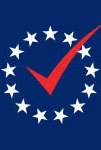Voter Confidence in 2010: Voter Identification, Perceptions of Fraud, Winning and Losing and the Voter Experience
Working Paper No.: 103Date Published: 2011-04-17
Author(s):
Lonna Rae Atkeson, University of New Mexico
Abstract:
Over the last decade, scholars of American politics have invested research time and effort into the study of election administration and election performance. These include studies onresidual vote analysis (Wand et al 2001; Ansolabhere and Stewart 2005; Mebane 2004), election auditing (Atkeson, Alvarez and Hall 2009; Ansolabehere and Reeves 2004), the role of pollworkers (Hall, Monston and Patterson; Clausen et al, Atkeson et al 2009), the role of technology (Tomz and Van Howling 2003; Avarez and Hall 2004; Stein et al 2008; Knack and Kropf 2003;Kimball and Kropf 2005, 2008), provisional votes (Atkeson, Alvarez and Hall 2009; Alvarez and Hall 2009; Pitts and Neuman 2009; Kimball and Foley 2009), voter identification (Pitts andNeuman 2009; Atkeson et al 2010, Ansolabehere 2009; Cobb, Greiner, and Quinn 2010), and voter confidence (Bullock, Hood 2005; Atkeson and Saunders 2007; Alvarez, Hall andLlewellyn 2008; Murphy, Johnson and Bowler 2010; Magleby et al 2010) among others. These studies have been in direct response to the presidential election meltdown in 2000, which for thepublic focused largely on Florida, but was also seen in other states, especially those where the race was very close, including New Mexico and Ohio (Caltech/MIT Voting Technology Project,2001; Atkeson and Tafoya 2005). This work has been highly productive creating new linkages between political scientists, local election officials, and legal professional to create a data drivenapproach to election reform and a push to improve and modernize the local election systems across the nation (Gerken 2009; Atkeson et al 2010, 2011; Alvarez et al 2009).
